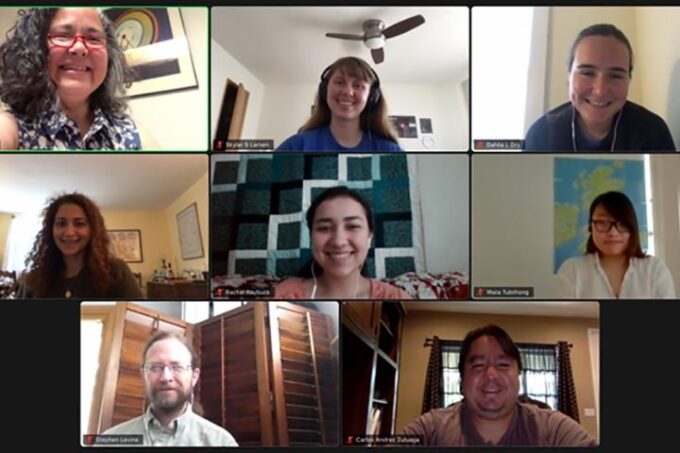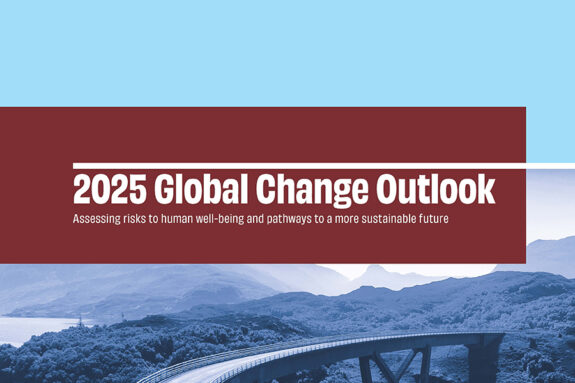A record number of undergraduates take up remote research in EAPS during COVID-19.
COVID-19 has taken “cancel culture” and raised the bar. This past spring, when the pandemic hit the Boston area, work and social events halted; people dispersed. For MIT, on-campus teaching ceased almost overnight, and summer plans, including fieldwork projects, for the community were upended. Undergraduates were one of the groups disproportionately hurt. Summer internships and jobs needed to support the students and their career prospects vanished.
Recognizing this reality that undergraduate students now faced and hearing requests for help, EAPS and MIT School of Science professors, instructors, and staff quickly mobilized, creating opportunities where there were none. Thanks to the work of Academic Administrator Megan Jordan, Associate Department Head Taylor Perron, EAPS undergraduate officer and Professor of Planetary Sciences Richard Binzel, Senior Lecturer Amanda Bosh, the faculty body, and generous financial support from School of Science Dean Mike Sipser, EAPS was able to offer 93 students Undergraduate Research Opportunities (UROPs).
“In a normal summer, the number of UROPs at EAPS would be 15-20,” EAPS Department Head Rob van der Hilst wrote to the EAPS community, praising the impressive efforts of the department to make this possible.
The program, which runs June 1 – Sept 7 and is entirely online this year, spans the breadth of EAPS’ investigations, in space, location and time, as do the interests of its participating students. From looking at “freshwater methane emissions in Massachusetts” and “An Oral History of Organic Geochemistry” to “Assessment of Instrumentation for Venus Life Finding Mission”, “Investigating the extent and impact of tropical rainfall extremes in the 1st Millennium BC”, and “Modelling the Spatial Spread of Epidemics”, EAPS UROPs have geosciences covered. Additionally, the participants nearly run the gamut of MIT departments. Of the UROP students, 38 are rising sophomores and the rest are split between rising juniors and seniors. Further, a handful of students are simultaneously working on two different projects, like Claire McLellan-Cassivi from AeroAstro, who is collaborating with Binzel and Director Mike Person at Wallace Astrophysical Observatory on investigating TESS candidate planets, and postdoc Artem Burdanov and Assistant Professor Julien de Wit to use the department’s SPECULOOS North telescope to investigate correlated noise in optical photometry. EAPS major Juliana Drozd is working with the Bergmann and Summons groups on paleoclimate reconstruction of the Cambrian Period, when there was an explosion of multicellular organisms, and the oral history science communications project previously mentioned, respectively.
“It’s really been wonderful seeing how the faculty and researchers in EAPS have opened their groups and their work to a large number of UROP students,” said Bosh, who leads the summer UROP activities team, with graduate students Ellen Lalk, Meghana Ranganathan, and Julia Wilcots. The magnitude of this program wouldn’t be possible without the contributions and mentorship of graduate students, postdocs and researchers, who have generously volunteered their time, experience, and expertise to make this a success. In the UROP program, Bosh says, students are presented with a chance to explore research that they’re interested in and/or haven’t had the time to interact with to see if it’s a potential career interest for them. The students can learn by doing—practicing different types of science, learning which fields use which techniques and how research interests overlap and collaboration works.
“From a very young age, I had known I wanted to study astronomy,” said EAPS major Skylar Larsen, who’s working with Bosh to search for Kuiper Belt Objects and Centaurs (small, rocky objects with orbits that overlap with the region between Jupiter and Neptune) in astrometric data. “I loved the idea of observing giant, celestial bodies as they orbit through space from the comfort of my own telescope or computer. Aside from my natural interest in astronomy, I took the UROP to broaden my horizons and learn about topics that were still a little new to me, such as coding in Python to calculate and graph data. Taking a UROP (for me, an EAPS UROP) is the perfect opportunity to expand upon topics you love, while combining it with new knowledge and experiences.”
Additionally, the summer UROP team wanted to enrich the UROP experience beyond research to provide 360-degrees of support and academically and socially—helping the students to become more connected to each other, better acquainted with the department, and well-rounded in their scientific knowledge. This aspect of the program includes running mentor training sessions on Mondays, when all the students gather to discuss how their work is going, potential solutions to problems and anything else that might be on the horizon. Following this are regular group meetings and the Summer Seminar Series (S3), organized by Bosh, which is well-attended. Twice a week, graduate students, faculty or staff share short talks on their ongoing projects, careers in science, hobbies, and helpful resources for scientists, like how to use the Libraries for literature searches, parallel career paths with science journalism, or the relationship between runaway greenhouse gases and snowball Earths. After the first week of August, S3 will transition to a colloquium/poster session with presentations by the students on their summer research. The week concludes with a Friday social hour for the cohort, with activities like trivia or best practices in science communications and presentations. All of this is bolstered by a Slack channel for the group to enhance cohort-building; to foster research problem-solving amongst the students across disciplines of Earth, planets, climate and life; and augment students’ knowledge of and curiosity for geoscience work outside their own research bubble.
“One of the reasons I love the EAPS Department so much is how much of a tight-knit and diverse community it is,” said Larsen. “The interdisciplinary nature of Course 12 means you collaborate with geologists, climate scientists, astrobiologists, you name it, and everyone has some unique stories to share.”
“Given the wide scope of research in EAPS, we saw an opportunity to offer students a collection of summer research internships that would match the variety of their interests,” said Perron. “Given the large response we received, it also became an opportunity to create a special community to help connect students working remotely across EAPS. The EAPS summer UROP activities team and the large number of faculty, researcher and graduate student mentors are making this a big success.”
Story Image: Bosh UROP group gathers on Zoom call. (Credit: Amanda Bosh)



